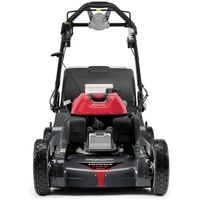Honda lawn mower won’t start. A honda lawn mower engine, or any fuel-burning engine for that matter, needs three parts to run. If your lawnmower isn’t running well, you can pick it apart to find out why.
Most people start with the spark plug because finding the problem there is usually straightforward. Forget oil and filters.
These are seldom the problem when a lawnmower doesn’t start unless they’re already very old and worn out but making sure your air filter is clean can’t hurt.
If it still won’t start after fixing the easy stuff like ensuring your gas tank is full (add fresh fuel if needed), then take extra time to check all other wiring connections between your battery, starter motor, and spark plug.
Honda lawn mower won’t start
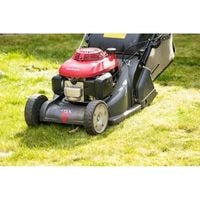
Loose, Dirty, or Disconnected Spark Plug: Check out your spark plug to make sure it’s clean and that you can reconnect securely.
Dirty Air Filter: Clean or replace the filter. Fuel Not Reaching the Engine: Tap on your carburetor to see if it helps your engine receive more fuel. If this doesn’t work, think about getting a fuel filter replacement.
You won’t find one specific problem in this article, but rather things to check and rules to follow when you encounter problems with your Honda lawnmower.
Fuel pump not working
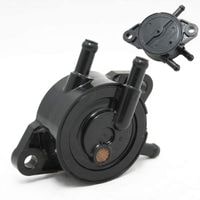
The fuel pump is within a gas tank. It has three parts the gas in port, the gas out port, and the pulse port. The pulse port is connected to the engine crankcase by a small rubber tube.
As the engine runs, the air inside the crankcase alternately pressurizes and depressurizes this breathable tubing which in turn moves a diaphragm inside the pump and pumps gas.
If there’s too much oil in your vehicle, then it could force its way into this port making it effectively useless.
Also, check valves on either side of both ports mean lubricants or dirt will not come back through this tubing as well these need to be cleaned so that they can work properly as well.
This means if your fuel pump isn’t working properly or you think something has gone wrong with your motor etc.
You’ll want to check for blockages or replacements for these two parts possibly needing replacement to make sure everything is back up to top standards.
Defective Spark Plug
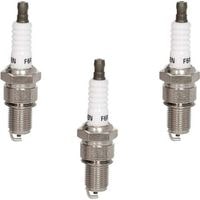
Check the spark plug for signs of wear or damage. Replace the spark plug if the porcelain insulator is cracked, an electrode is damaged or burned away, or if there is heavy carbon buildup at the electrode.
Use a spark plug tester to determine if the spark plug is defective. is defective.
The tester should show a strong spark between the terminals when the engine is running.
A spark plug that does not spark indicates a defect and should be replaced.
The carburetor might be clogged
A clogged carburetor is a common problem for lawnmowers. It’s often caused by a lack of maintenance or leaving fuel in the tank for an extended period of time.
If you don’t clean and replace the fuel at regular intervals, leftover splatter from previous mowing sessions can sometimes congeal together into a thicker substance that may eventually become clogged once again.
This is why it’s important to regularly perform maintenance on your mower and make sure to schedule in-depth cleaning every so often.
Make sure all fluids are checked at least once per season if not more frequently depending on usage plus replacement as necessary.
Clogged fuel filter
It is possible that the fuel filter is clogged. Clogged fuel filters are commonly caused by leaving old fuel in the lawnmower, which evaporates over time, causing a thicker residue that clogs the fuel filter and makes the engine unable to start.
Fuel left in the lawnmower should be drained and the fuel filter should be replaced if there is old fuel left in the mower.
The rewind spring may be broken
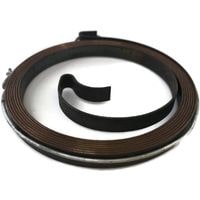
The rewind spring may be broken. When you pull the cord to start the engine and let go, the rewind spring recoils the cord onto a pulley.
If the rewind spring is broken, the cord won’t recoil onto the pulley, so it will not start.
The best way to fix this problem is to replace the rewind spring, which can often be easily replaced by itself.
However, if replacing it on your own proves difficult then you may want to consider replacing the entire recoil starter assembly instead because in many cases it’s far easier and provides better results for a whole lot less trouble.
Recoil Starter problem
The recoil starter assembly is used in the engine to start the motor. Engage with the crankshaft, turning over the engine. If the unit is defective, the motor will not operate.
Remove starter assembly and inspect functions – make sure that it’s working properly when pulling rope tabs should grab drive hub causing the engine to turn and rewind back onto the pulley.
If the operation has problems replace the starter assembly
The ignition coil is defective
The honda lawn mower engine’s ignition coil sends voltage to the spark plug while the car engine is running. If the ignition coil is defective, the engine may not start.
Before replacing the ignition coil, ensure that the spark plug is working properly.
If you have confirmed that the spark plug is working properly, test the ignition coil with an ignition tester meter device. If it’s defective, replace it with a new one.
Problems with old or bad gasoline
Old or bad fuel in the carburetor float bowl can cause your boat engine not to start. Over time, some of the ingredients in that fuel may evaporate, leaving behind a thicker substance.
This sticky fuel can clog up the carburetor and prevent the engine from starting. If the carburetor is dirty and full of old fuel, your engine might struggle to start if it runs on gas.
Broken flywheel key
A lawnmower’s flywheel key will help to determine if the lawnmower is able to start. If the key becomes broken, this will prevent it from starting up.
If there is a sudden impact that requires the motor to stop quickly, the flywheel will lock in place and shear off most of the key so that it won’t get damaged.
Inspect the flywheel key after removing the flywheel from the engine to determine if it is broken. Replacement is necessary if the key is damaged.
Honda lawn mower won’t start
Related Guides
